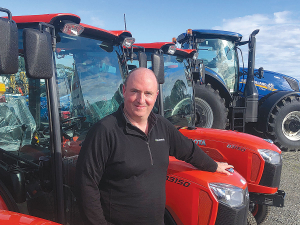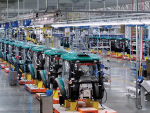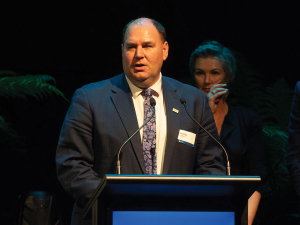It looks like 2022 will be a repeat of the previous year, with Tractor and Machinery Association (TAMA) president Kyle Baxter seeing first-hand how stronger commodity prices are giving farmers and rural contractors the confidence to invest in new equipment.
With many machines already on order, customers are also gearing up for the next spring and summer campaign, driving high demand for the latest technology. Thankfully, the flow of equipment into New Zealand has increased dramatically - welcome relief for those needing new equipment, which is being put straight to work on arrival.
TAMA reports that overall tractor sales are up more than 25% for the year to date, compared to 2021, which was already a 19% increase on 2020, with the trend looking to continue on the back of strong confidence in the agri-sector.
Reporting consistent increases across all horsepower sectors, standouts include a 20% increase in the sub-40hp sector, a 27% rise in 40-100hp tractors and a 30%+ increase in the 100-150hp group, predominntly used in the dairy segment.
Regionally, performance in dairy areas such as Northland, Waikato, Taranaki, and Southland, have experienced significant growth, while areas focused on horticulture such as the Bay of Plenty, Hawke's Bay and Nelson are experiencing strong commodity prices, said to be driving buyer confidence.
While increased commodity prices are welcomed by many producers, it also comes with a sting in the tail. Continued agri-commodity growth has seen a corresponding increase in costs and availability in most areas of the manufacturing and supply chain. Raw materials, labour, fuel and ocean shipping cost have all increased dramatically, resulting in a flow-on affect that increases the cost of goods being delivered to New Zealand.
Already many TAMA member companies are turning their thoughts to business beyond 2022, as they confirm production slots for equipment expected to arrive in early-mid 2023, ensuring that supply continues to meet demand.
Continued inbound and outbound challenges are also impacting the TAMA members who are importers, exporters, and retailers, while global manufacturing constraints are a reality, as plants continue to work through local Covid restrictions and constraints in component supply. These all contribute to major disruption of the smooth flow of equipment into New Zealand.
Ongoing border restrictions have also left many TAMA members short-staffed, putting increased pressure on individual members, staff, and their customers as they grapple with the strong demand for, and growing deliveries of, equipment.


















